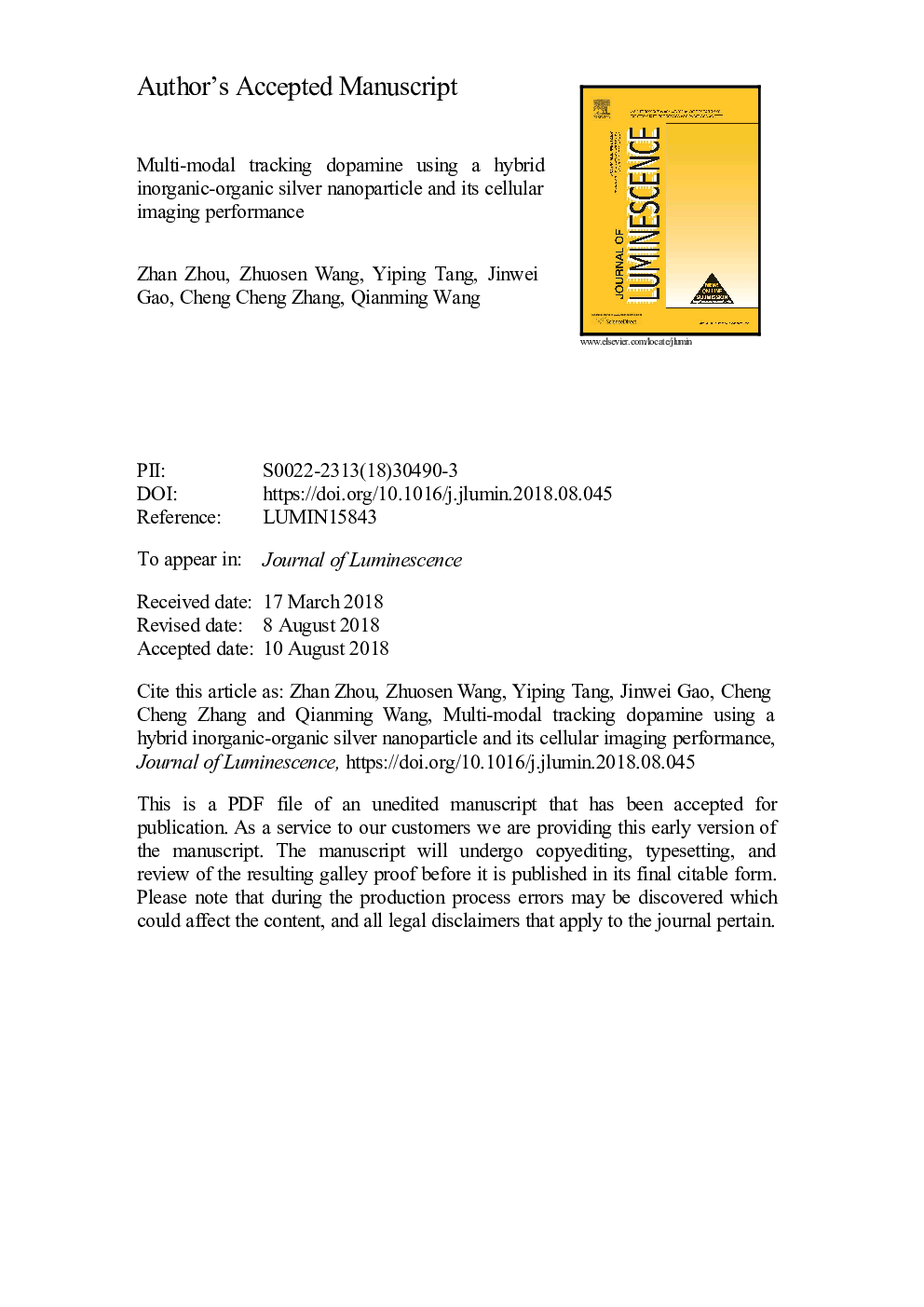| Article ID | Journal | Published Year | Pages | File Type |
|---|---|---|---|---|
| 7839708 | Journal of Luminescence | 2018 | 26 Pages |
Abstract
A novel strategy to highly sensitize terbium luminescence through 3-carboxyphenylboronic acid as the antenna ligand has been realized and the hybrid inorganic-organic probe has been assembled based on the silver nanoparticles. Its green emission is turned off in the presence of dopamine and the detection process is within 2-3â¯s. Cyclic voltammetry curves showed that a glassy carbon electrode modified with this lanthanide nanostructure demonstrated favorable electrocatalytic activity for the oxidation of dopamine in phosphate buffer. The developed nanosensor gave rise to a linear correlation depending on dopamine concentration and the detection limit was determined to be 0.41â¯Î¼M. This dual-modal (optical and electrochemical) probe exhibited excellent selectivity and enough stability. The feasibility of the terbium sensitized nanosensor for cellular imaging has also been reported. Two adherent cell lines (Hela cells and THP-1 cells) exposed to the nanoprobe demonstrated striking green luminescence and showed on-off changes in the regulation of dopamine.
Related Topics
Physical Sciences and Engineering
Chemistry
Physical and Theoretical Chemistry
Authors
Zhan Zhou, Zhuosen Wang, Yiping Tang, Jinwei Gao, Cheng Cheng Zhang, Qianming Wang,
